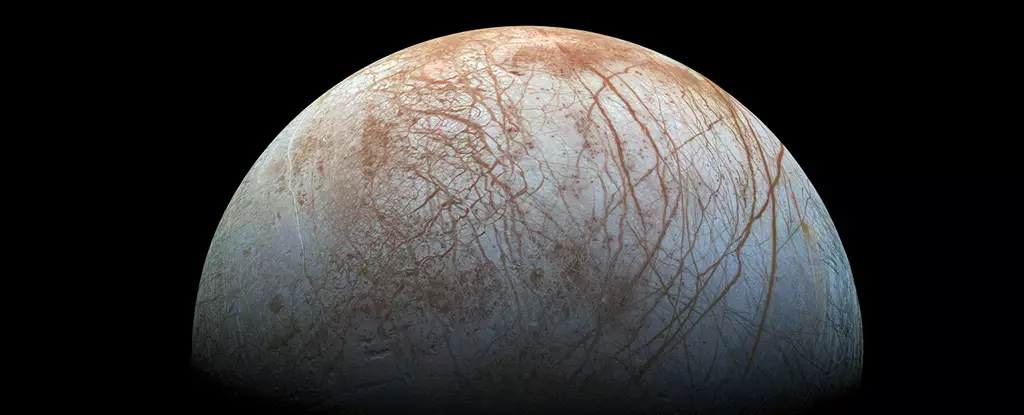The search for life beyond Earth has never been more exciting, and Jupiter’s moon Europa has emerged as a prime candidate. Recent research, utilizing data from the James Webb Space Telescope, has provided compelling evidence that carbon dioxide detected on Europa’s surface originates from the vast ocean beneath its icy shell. These findings have ignited hopes that this hidden water source could potentially harbor extraterrestrial life. This article delves into the research conducted by two US-led teams of scientists and explores the implications of these discoveries for the search for life beyond our planet.
For years, scientists have postulated the existence of a vast ocean of saltwater beneath Europa’s ice-covered surface. Proving the presence of this concealed ocean, as well as its potential to support life, has posed a significant challenge. However, the recent studies utilizing James Webb Space Telescope’s near-infrared spectrometer have shed new light on this enigmatic moon.
Carbon dioxide plays a crucial role in the development and sustainability of life. Detecting its presence on Europa’s surface opened up the possibility of the ocean below containing the necessary chemical elements to support life. Consequently, the researchers focused their efforts on mapping CO2 and understanding its origin.
The studies revealed that the highest concentration of carbon dioxide exists within Tara Regio, an area spanning 1,800 kilometers (1,120 miles). Tara Regio is characterized by “chaos terrain,” featuring jagged ridges and cracks. The prevailing theory suggests that warm water rises from the ocean below, melting the surface ice and eventually freezing into uneven crags over time. This phenomenon offers an intriguing clue to the potential processes taking place within the hidden ocean.
The first study led by Samantha Trumbo at Cornell University concluded that the carbon dioxide found on Europa’s surface was “ultimately derived from the interior, likely the internal ocean.” While the possibility of the carbon rising from the planet’s interior as rock-like carbonate minerals exists, further research is needed to confirm this hypothesis. Additionally, the presence of table salt in Tara Regio supports the notion that chemical compounds from the ocean may be reaching the surface.
The combined findings of these studies provide valuable insights into Europa’s internal chemistry. With the detection of salt and carbon dioxide, scientists are beginning to understand the complex nature of this enigmatic moon. These discoveries contribute to our understanding of the potential conditions necessary for extraterrestrial life to thrive.
Building upon this newfound knowledge, two major space missions are set to explore Europa’s secrets. The European Space Agency’s Jupiter moon probe, Juice, launched in April, aims to delve into the mysteries of Europa, Ganymede, and Callisto. Scheduled for 2024, NASA’s Europa Clipper mission will provide a closer examination of Europa. These missions offer an unprecedented opportunity to collect data and further investigate the potential for life on these icy moons.
The discoveries made through the James Webb Space Telescope’s data analysis provide an optimistic outlook for the future exploration of Europa. Juice project scientist Olivier Witasse expressed excitement about the potential wealth of new information that will be gathered when Juice flies past Europa in 2032. The mission will enable scientists to study the moon’s surface chemistry and gain further insights into its potential habitability. While the search for extraterrestrial life remains ongoing, these missions bring us closer to answering the age-old question: Are we alone in the universe?
The revelation that carbon dioxide detected on Europa’s surface originates from its hidden ocean marks a significant milestone in our understanding of this intriguing moon. With the promise of future space missions, we are on the cusp of unraveling the mysteries of Europa and investigating the potential for life beyond Earth. As technology advances and our knowledge deepens, humanity’s quest to uncover the truth about our place in the cosmos continues, fueled by the remarkable discoveries made on Jupiter’s moon Europa.


Leave a Reply